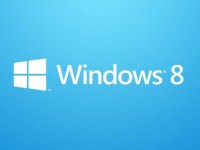This covers Microsoft's revelation of three distinct Windows 8 editions designed to address diverse computing platforms and user segments during the company's ambitious attempt to unify desktop and mobile computing experiences. Patrick Bisch details the standard Windows 8 edition for mainstream consumers, Windows 8 Pro targeting technical professionals and businesses, and the game-changing Windows RT edition built specifically for ARM processors to compete with iPad and Android tablets. The coverage captures Microsoft's bold strategic pivot toward touch-first computing and cross-platform compatibility during the post-PC transition period when traditional Windows dominance faced serious challenges from mobile operating systems.
The edition differentiation analysis explains Microsoft's market segmentation strategy through feature distribution across consumer, professional, and phone categories. Bisch highlights Windows 8's enhanced Windows Explorer and Task Manager updates, multi-monitor support improvements, and language switching features that addressed core productivity user needs. The Windows 8 Pro feature set includes encryption, virtualization, PC management, and domain connectivity that maintained enterprise appeal while supporting new touch interfaces. The Windows RT positioning emphasizes thin form factors, extended battery life, and bundled Microsoft Office suite connection that directly targeted iPad's productivity limitations.
The architectural innovation evaluation covers Microsoft's unprecedented attempt to maintain x86/x64 compatibility while expanding to ARM processors for mobile competition, representing the most important Windows platform expansion since the original Windows launch. The touch-optimized Office suite inclusion for Windows RT shows Microsoft's recognition that productivity applications were essential for tablet adoption in business environments. The Consumer Preview availability strategy shows Microsoft's commitment to public testing and feedback connection during development.
This Windows 8 edition announcement captures Microsoft's most ambitious operating system strategy in company history, attempting to bridge traditional PC computing with emerging tablet and touch-first computing paradigms while maintaining backward compatibility and business features. Looking back 13+ years later, Windows RT proved commercially unsuccessful and was discontinued after limited adoption, while Windows 8's touch-first interface received important criticism that led to Windows 10's more traditional desktop approach, demonstrating the challenges of forced platform unification during transition periods. The ARM processor support pioneered here eventually succeeded with Windows on ARM and Apple's M1 transition, validating Microsoft's early recognition of ARM's potential for PC computing despite premature execution. The edition segmentation strategy influenced modern Windows versions where Home, Pro, and Enterprise editions continue serving different market segments, though with more refined feature differentiation based on actual user needs rather than platform architecture. The touch improvement focus documented here anticipated the eventual success of 2-in-1 devices and Surface tablets that proved viable alternatives to traditional laptops, though requiring several hardware and software generation improvements to achieve market acceptance. The bundled Office connection highlighted Microsoft's understanding that productivity applications were crucial for business tablet adoption, establishing patterns for modern productivity-focused phones and cross-platform application development. The Consumer Preview strategy showd the value of public beta testing for major operating system releases, influencing modern software development practices where continuous user feedback shapes product development rather than traditional internal-only testing approaches. This moment represents Microsoft's recognition that mobile computing required fundamental rather than incremental changes to traditional desktop operating systems, establishing foundations for modern computing platforms that successfully integrate desktop productivity with mobile convenience and touch interaction paradigms.
This summary was created by Dave Rogers. The original post was written by Patrick Bisch and published on April 1, 2012.
If you'd like to view the original post, you can find it here.
